Replace Multiple Characters Python
In Python, there are multiple ways to replace characters in a string. One common task is replacing multiple characters at once, which can be done using various techniques. In this article, we will explore different methods for replacing multiple characters in Python and discuss how to handle different scenarios.
Using the “replace” method to replace multiple characters
The simplest way to replace multiple characters in a string is by using the built-in “replace” method in Python. This method allows you to specify the characters you want to replace and the character you want to replace them with.
Here’s an example that demonstrates how to use the “replace” method to replace multiple characters:
“`python
string = “Hello, World!”
new_string = string.replace(“o”, “a”).replace(“l”, “m”)
print(new_string) # Output: Hemma, Waramd!
“`
In the above code, we replaced all occurrences of the letter “o” with “a” and all occurrences of the letter “l” with “m”. The resulting string, “Hemma, Waramd!”, reflects the changes made.
Creating a dictionary to map multiple characters
Another approach to replacing multiple characters is by using a dictionary to map the characters you want to replace with their respective replacements. This method allows for more flexibility, as you can easily extend or modify the replacements.
Here’s an example that demonstrates how to use a dictionary for replacing multiple characters:
“`python
string = “Hello, World!”
replacements = {“o”: “a”, “l”: “m”}
new_string = “”.join(replacements.get(char, char) for char in string)
print(new_string) # Output: Hemma, Waramd!
“`
In the above code, we defined a dictionary named “replacements” with keys representing the characters to be replaced and values representing their replacements. Using a list comprehension and the “join” method, we iterate over each character in the string and replace it with the corresponding value from the dictionary. If a character is not found in the dictionary, it remains unchanged.
Implementing a custom function for replacing multiple characters
If you need more control over the replacement process, you can create a custom function to handle the task. This approach allows you to implement specific logic for replacing characters based on your requirements.
Here’s an example of a custom function for replacing multiple characters:
“`python
def replace_multiple_chars(string, replacements):
for old_char, new_char in replacements.items():
string = string.replace(old_char, new_char)
return string
string = “Hello, World!”
replacements = {“o”: “a”, “l”: “m”}
new_string = replace_multiple_chars(string, replacements)
print(new_string) # Output: Hemma, Waramd!
“`
In the above code, we defined a function named “replace_multiple_chars” that takes a string and a dictionary of replacements as arguments. Using a for loop, we iterate over each key-value pair in the dictionary and replace occurrences of the old character with the new character in the string.
Handling cases with different replacement lengths
One challenge that can arise when replacing multiple characters is when the replacements have varying lengths. This can lead to unexpected results, as the string’s length may change during the replacement process.
To handle this situation, one approach is to replace the characters from left to right, ensuring that the replacement does not affect subsequent replacements. Alternatively, you can use regular expressions to match and replace patterns in the string.
Dealing with overlapping replacements
Another scenario to consider is when replacements overlap each other. For example, suppose we want to replace “abcd” with “AB” and “cd” with “EF”. If we apply the replacements simultaneously, the second replacement will operate on the already replaced substring “AB”. To avoid this, we should handle replacements sequentially or use a more sophisticated algorithm that accounts for overlapping patterns.
Performing case-insensitive replacements
By default, the “replace” method in Python is case-sensitive. However, there may be cases where you want to perform case-insensitive replacements. In such situations, you can convert the string and the replacements to lowercase or uppercase before performing the replacements.
FAQs
Q: Can I replace multiple characters in a Python list?
A: Yes, you can convert the list to a string and apply the desired replacement method. After replacing the characters, you can convert the string back to a list if necessary.
Q: How can I remove multiple characters from a string in Python?
A: To remove multiple characters from a string in Python, you can use the “replace” method and replace the characters with an empty string. Alternatively, you can use regular expressions to match and remove specific patterns.
Q: How can I replace multiple spaces with one space in Python?
A: One way to replace multiple spaces with a single space in Python is by using a regular expression. You can use the “re” module and the “sub” function to match multiple spaces and replace them with a single space.
Q: How can I replace special characters in a string using Python?
A: Special characters can be replaced using the techniques mentioned earlier. You can provide the special characters and their replacements as input to the desired replacement function or method.
Q: Are there any performance considerations when replacing multiple characters in Python?
A: The performance of replacing multiple characters depends on the size of the string and the number of replacements. Using the “replace” method or a dictionary-based approach can be efficient for small strings. However, for large strings or a significant number of replacements, using regular expressions or more optimized algorithms might be more suitable.
Python : Best Way To Replace Multiple Characters In A String?
Can You Replace Characters In A List Python?
Python is a powerful and versatile programming language that offers many built-in functions and methods to manipulate data. When working with lists in Python, you might come across a situation where you need to replace characters in the list. In this article, we will explore various methods and techniques to replace characters in a list using Python.
Before diving into the details, let’s have a quick understanding of lists in Python. A list is an ordered collection of elements, which can be of any data type. Lists are mutable, meaning that their contents can be altered without creating a new list. This feature makes lists ideal for tasks that require dynamic updating or modification.
Now, let’s explore different methods to replace characters in a list in Python.
1. Using a For Loop:
The most straightforward way to replace characters in a list is by using a for loop. Iterate through each element in the list and use the replace method to replace the desired character.
“`python
my_list = [‘apple’, ‘banana’, ‘cherry’]
char_to_replace = ‘a’
new_char = ‘x’
for index, item in enumerate(my_list):
my_list[index] = item.replace(char_to_replace, new_char)
“`
In the above example, we have a list `my_list` containing strings. We want to replace the letter ‘a’ with ‘x’ in each string of the list. Using a for loop, we iterate through each item, replace the desired character, and update the item in the list accordingly.
2. List Comprehension:
Python provides a concise and powerful technique called list comprehension, which allows us to create a new list based on an existing list in a single line. We can leverage this feature to replace characters in a list.
“`python
my_list = [‘apple’, ‘banana’, ‘cherry’]
char_to_replace = ‘a’
new_char = ‘x’
my_list = [item.replace(char_to_replace, new_char) for item in my_list]
“`
In the above example, we create a new list by iterating through each item in `my_list` and replacing the desired character using the replace method. The resulting list is assigned back to `my_list`.
3. Using the map() Function:
The map() function is another useful tool in Python that allows us to apply a function to each element of an iterable. We can combine this function with a lambda function to replace characters in a list.
“`python
my_list = [‘apple’, ‘banana’, ‘cherry’]
char_to_replace = ‘a’
new_char = ‘x’
my_list = list(map(lambda item: item.replace(char_to_replace, new_char), my_list))
“`
In this example, we use the lambda function to create an anonymous function that replaces the desired character. The map() function applies this lambda function to each element in `my_list` and returns a map object. To convert the map object back to a list, we wrap it with the list() function.
These three methods provide different approaches to replace characters in a list using Python. Depending on your specific use case and coding style, you can choose the method that suits you best.
Now let’s address some common questions and concerns about replacing characters in a list using Python.
FAQs:
Q1. Can I replace multiple characters in a single go?
Yes, you can replace multiple characters in a single go. Simply modify the `char_to_replace` and `new_char` variables to hold multiple characters. For example, if you want to replace both ‘a’ and ‘b’ characters with ‘x’, set `char_to_replace = ‘ab’` and `new_char = ‘x’` in the above examples.
Q2. Is there a way to replace characters in a case-insensitive manner?
Yes, you can achieve case-insensitive replacement by converting the strings to lowercase or uppercase before performing the replace operation. For example, you can modify the code like this:
“`python
my_list = [item.lower().replace(char_to_replace.lower(), new_char) for item in my_list]
“`
In this modified code, both the strings being compared are converted to lowercase using the lower() method before replacement.
Q3. Can I replace only the first occurrence of a character in each string?
Yes, if you only want to replace the first occurrence of a character, you can use the replace method with a count argument. Set the count argument to 1 to replace only the first occurrence. For example:
“`python
my_list = [‘apple’, ‘banana’, ‘cherry’]
char_to_replace = ‘a’
new_char = ‘x’
my_list = [item.replace(char_to_replace, new_char, 1) for item in my_list]
“`
In this modified code, only the first instance of ‘a’ in each string will be replaced.
In conclusion, replacing characters in a list using Python is straightforward with the help of built-in functions and methods. The flexibility and simplicity of Python provide us with multiple approaches to achieve the desired replacement. Whether you prefer a traditional for loop, list comprehension, or utilizing functions like map(), Python offers a convenient solution for your needs.
What Is The Fastest Way To Replace Characters In String Python?
String manipulation is a common task in programming, and at times, we may need to replace specific characters in a string with new ones. Python, being a versatile language, offers various methods to achieve this. However, some approaches are faster than others. In this article, we will explore the fastest ways to replace characters in a string in Python.
1. Using the str.replace() method:
Python’s built-in str.replace() method provides a straightforward way to replace characters in a string. It takes two parameters: the character(s) to be replaced and the replacement character(s). This method performs the replacement by creating a new string with the modified characters.
Here’s an example:
“`python
string = “Hello, World!”
new_string = string.replace(“o”, “e”)
print(new_string) # Hell, Werld!
“`
While str.replace() is efficient for small string replacements, it becomes slower as the size of the string or the number of replacements increases. This method scans the entire string for each replacement, resulting in low performance for large-scale operations.
2. Using a list comprehension and str.join():
A faster alternative to str.replace() is using list comprehension to iterate over the string and replace the characters as required. Later, the list can be joined back into a string using str.join().
Here’s an example:
“`python
string = “Hello, World!”
new_string = ”.join([‘e’ if letter == ‘o’ else letter for letter in string])
print(new_string) # Hell, Werld!
“`
Using list comprehension and str.join() offers improved performance over str.replace(), especially for larger string replacements. The iteration allows for more granular control and can be optimized to suit specific requirements.
3. Using the re.sub() function from the re module:
For advanced string replacements using regular expressions, Python’s re module provides the re.sub() function. It allows for powerful pattern matching and replacement, making it suitable for complex scenarios.
Here’s an example:
“`python
import re
string = “Hello, World!”
new_string = re.sub(r’o’, ‘e’, string)
print(new_string) # Hell, Werld!
“`
Although re.sub() provides extensive functionality, it involves compiling and processing regular expressions, which can impact performance for simple character replacements. Therefore, it is recommended primarily for complex replacements where regular expressions are required.
FAQs:
Q: Can I replace multiple characters at once?
A: Yes, all the discussed methods allow for replacing multiple characters simultaneously. You can simply pass the characters to be replaced as a single parameter or include them as part of a regular expression pattern.
Q: Are these methods case-sensitive?
A: Yes, all the mentioned methods are case-sensitive. If you want to perform case-insensitive replacements, you can use the re.IGNORECASE flag with re.sub() or manually handle the case differences in list comprehension and str.join().
Q: Which method should I choose?
A: The choice of method depends on the specific requirements of your task. For simple and small-scale character replacements, str.replace() works efficiently. However, if you expect larger strings or a high number of replacements, using list comprehension and str.join() is recommended for better performance. For complex pattern matching and replacements, re.sub() provides a powerful solution.
Q: Are there any limitations to these methods?
A: While the discussed methods are effective for most scenarios, it is important to consider the memory requirements when dealing with large strings. Keep in mind that creating a new string for each replacement can be memory-intensive. If you are working with massive strings, it may be necessary to consider alternate approaches that optimize memory usage.
In conclusion, Python provides several approaches to replace characters in a string, each with its own performance characteristics. For optimal results, choose the method that best suits your specific requirements.
Keywords searched by users: replace multiple characters python Python string replace multiple, Replace multiple characters in JS, Multiple replace Python, Remove multiple characters from string Python, Replace character in list Python, Python replace multiple spaces with one, Replace character Python, Replace special characters in Python
Categories: Top 78 Replace Multiple Characters Python
See more here: nhanvietluanvan.com
Python String Replace Multiple
Python is a versatile programming language that offers a wide range of functionalities when it comes to string manipulation. One such functionality is the ability to replace multiple occurrences of a substring within a given string. This feature not only saves time and effort but also allows for cleaner and more concise code. In this article, we will delve into the details of Python’s string replace multiple function, explore its various applications, and answer some frequently asked questions.
Python’s string replace multiple function allows you to replace multiple occurrences of a substring within a given string. It simplifies the process of replacing multiple instances by condensing multiple replace statements into a single operation. The function is built-in and readily available, requiring no additional installations or libraries.
The syntax for Python’s string replace multiple function is as follows:
“`python
new_string = string.replace(old_substring, new_substring)
“`
Here, `string` represents the original string in which replacements need to be made, `old_substring` is the substring to be replaced, and `new_substring` is the replacement text. The function returns a new string with all occurrences of `old_substring` replaced by `new_substring`.
In the above syntax, it’s important to note that the string replace multiple function is case-sensitive. This means that if the `old_substring` appears in different cases within the original string, it will only be replaced in the same case in the new string. To perform a case-insensitive replacement, you can use additional techniques like regular expressions.
Now, let’s dive into some practical examples to better understand how Python’s string replace multiple function works.
Example 1:
“`python
original_string = “The cat sat on the mat.”
new_string = original_string.replace(“cat”, “dog”)
print(new_string) # Output: “The dog sat on the mat.”
“`
In this example, we replace the word “cat” with “dog” in the original string. The function `replace` identifies all occurrences of the substring “cat” and replaces them with “dog”. The resulting string is “The dog sat on the mat.”
Example 2:
“`python
original_string = “I like apples, apples are delicious.”
new_string = original_string.replace(“apples”, “bananas”)
print(new_string) # Output: “I like bananas, bananas are delicious.”
“`
Here, we replace all occurrences of the word “apples” with “bananas” in the original string. After the replacement, the new string becomes “I like bananas, bananas are delicious.”
Example 3:
“`python
original_string = “aaaaa”
new_string = original_string.replace(“a”, “b”)
print(new_string) # Output: “bbbbb”
“`
In this example, we replace all occurrences of the letter “a” with the letter “b”. The resulting string is “bbbbb”.
Python’s string replace multiple function is not limited to replacing individual characters or words. It can handle longer substrings as well.
Example 4:
“`python
original_string = “abc123abc123”
new_string = original_string.replace(“abc”, “xyz”)
print(new_string) # Output: “xyz123xyz123”
“`
In this example, we replace the substring “abc” with “xyz”. The function identifies both occurrences of “abc” within the original string and replaces them with “xyz”. The resulting string is “xyz123xyz123”.
Let’s now address some frequently asked questions about Python’s string replace multiple function.
FAQs:
Q1. Is the string replace multiple function case-sensitive?
Yes, Python’s string replace multiple function is case-sensitive. It will only replace occurrences in the same case as the specified substring.
Q2. Can I replace multiple substrings simultaneously using this function?
No, the string replace multiple function only allows for the replacement of a single substring at a time. If you need to replace multiple substrings simultaneously, you can combine multiple replace statements or use a different approach.
Q3. Does the string replace multiple function modify the original string?
No, the string replace multiple function does not modify the original string. It returns a new string with the desired replacements, leaving the original string intact.
Q4. Can I replace a substring with an empty string?
Yes, you can replace a substring with an empty string by passing an empty string as the `new_substring` parameter.
In conclusion, Python’s string replace multiple function is a powerful tool for efficiently replacing multiple occurrences of a substring within a string. It simplifies the replacement process and ensures cleaner code. By using this function, you can save time and effort while manipulating strings in Python.
Replace Multiple Characters In Js
Introduction
JavaScript (JS) is a versatile programming language commonly used for developing web applications. One common task in JS is replacing multiple characters within a string. Whether you need to convert certain characters to their Unicode equivalents or simply replace punctuation marks, mastering this skill is essential for efficient string manipulation. In this article, we will dive into various techniques and methods to replace multiple characters in JS, along with some frequently asked questions to clarify any doubts you may have.
1. The replace() function in JS
The replace() function is a built-in method in JS that allows you to replace characters or patterns within a string with a new substring. The basic syntax for using this function is as follows:
“`javascript
string.replace(searchValue, replaceValue);
“`
Here, `string` represents the original string, `searchValue` refers to the character or pattern you want to search for, and `replaceValue` represents the substring you want to replace the matched characters or patterns with.
2. Replacing single characters
To replace a single character in a string, the replace() function can be used with a simple string as the searchValue. For instance, consider replacing all occurrences of the letter “a” with “b” in a string:
“`javascript
let originalString = “JavaScript”;
let newString = originalString.replace(“a”, “b”);
console.log(newString); // Output: JbvScript
“`
3. Replacing multiple characters simultaneously
To replace multiple characters simultaneously, regular expressions (regex) can be used as the searchValue. Regular expressions enable you to define patterns to match specific characters or character sets. By utilizing regex, you can replace multiple characters at once.
For example, let’s replace all occurrences of vowels (a, e, i, o, u) with “*”:
“`javascript
let originalString = “JavaScript is amazing!”;
let newString = originalString.replace(/[aeiou]/g, “*”);
console.log(newString); // Output: J*v*Scr*pt *s *m*z*ng!
“`
In this example, the regex /[aeiou]/g defines a character set containing all vowel characters, and the “g” flag ensures that all occurrences are replaced.
4. Replacing characters with Unicode equivalents
Sometimes, you may need to replace characters in a string with their Unicode equivalents. For instance, replacing accented characters (e.g., “á”, “é”, “í”) with non-accented characters (e.g., “a”, “e”, “i”) can be necessary in certain cases. In JS, Unicode escapes can be used to represent these characters.
Let’s replace accented characters in a string with their non-accented equivalents:
“`javascript
let originalString = “Café is a popular spot.”;
let newString = originalString.replace(/[\u00E0-\u00FC]/g, function (match) {
return String.fromCharCode(match.charCodeAt(0) – 32);
});
console.log(newString); // Output: Cafe is a popular spot.
“`
In the example above, the regex /[\u00E0-\u00FC]/g matches all characters with Unicode values ranging from \u00E0 to \u00FC, which includes most accented characters. The replace function replaces these characters with their non-accented equivalents by decreasing their Unicode value by 32.
FAQs
1. Can I use the replace() function to replace characters in a case-insensitive manner?
Yes, the replace() function in JS is case-sensitive by default. However, by using the regex i flag, you can perform a case-insensitive replace operation. For example:
“`javascript
let originalString = “Hello World”;
let newString = originalString.replace(/hello/i, “Hi”);
console.log(newString); // Output: Hi World
“`
2. Is there a way to replace characters without changing the original string?
Yes, the replace() function returns a new string with the replaced characters, leaving the original string unchanged. You can assign the result to a new variable to keep both the original and modified strings. For example:
“`javascript
let originalString = “JS is awesome!”;
let modifiedString = originalString.replace(“awesome”, “amazing”);
console.log(modifiedString); // Output: JS is amazing!
console.log(originalString); // Output: JS is awesome!
“`
3. How can I globally replace characters, excluding specific occurrences?
You can exclude specific occurrences from replacement by using a callback function as the replaceValue parameter. This function can conditionally decide what to replace based on the context. For example:
“`javascript
let originalString = “Reeeeplace”;
let newString = originalString.replace(/e/g, function (match, offset) {
if (offset === 1) {
return match; // Replace only the second occurrence of “e”
}
return “x”; // Replace all other “e”
});
console.log(newString); // Output: Rxxeeplace
“`
4. Can I use regular expressions to replace specific patterns in a string?
Yes, regular expressions are powerful tools for pattern matching and replacement. You can define complex regex patterns to replace specific patterns in a string. For example:
“`javascript
let originalString = “2021-06-14”;
let newString = originalString.replace(/(\d{4})-(\d{2})-(\d{2})/g, “$2/$3/$1”);
console.log(newString); // Output: 06/14/2021
“`
In the above example, the regex /(\d{4})-(\d{2})-(\d{2})/g matches the date pattern in `YYYY-MM-DD` format, and the replace function rearranges the pattern as `$2/$3/$1` to convert it to `MM/DD/YYYY` format.
Conclusion
Replacing multiple characters in JavaScript is a fundamental skill for efficient string manipulation. By utilizing the replace() function, regular expressions, and various techniques explored in this article, you can easily replace characters, patterns, or even convert them to their Unicode equivalents. Remember to practice regularly to master this skill and enhance your capabilities as a JS developer.
Multiple Replace Python
Let’s get started by understanding the basic idea behind multiple replace in Python. The built-in `replace()` function in Python is commonly used to substitute all occurrences of a specific substring within a string. However, it has its limitations since it can only handle one replacement at a time. This becomes an issue when you have to replace multiple substrings simultaneously, as repeatedly calling the `replace()` function can be cumbersome and inefficient.
Fortunately, Python provides several approaches to achieving multiple replace functionality. One such method is to use the `str.translate()` method combined with the `str.maketrans()` class method. The `str.translate()` method provides a way to replace specific characters or substrings by mapping them to the desired replacement. The `str.maketrans()` class method generates translation tables that can be used by the `str.translate()` method for replacement purposes. By combining these methods, you can create a mapping dictionary that maps substrings to their replacement values, enabling multiple replace in Python.
Here’s an example to illustrate this approach:
“`python
def multi_replace(string, repl_dict):
translation_table = str.maketrans(repl_dict)
return string.translate(translation_table)
text = “Replace foo and bar with baz”
replacements = {“foo”: “baz”, “bar”: “qux”}
result = multi_replace(text, replacements)
print(result)
“`
In this example, the `multi_replace()` function takes two parameters: `string`, which represents the input string, and `repl_dict`, which is a dictionary containing the substrings to replace as keys and their corresponding replacements as values. Inside the function, a translation table is generated using `str.maketrans()` and the given `repl_dict`. This table is then used by the `str.translate()` method to perform the replacement. The resulting modified string is returned as the output.
In addition to the `str.translate()` method, Python also offers the `re.sub()` function from the `re` module to achieve multiple replace functionality. The `re.sub()` function provides a powerful mechanism for replacing substrings using regular expressions. By making use of regular expression patterns, you can easily specify multiple replacements in a single call. Here’s an example to demonstrate this:
“`python
import re
def multi_replace(string, repl_dict):
pattern = re.compile(“|”.join(re.escape(key) for key in repl_dict.keys()))
return pattern.sub(lambda m: repl_dict[m.group()], string)
text = “Replace foo and bar with baz”
replacements = {“foo”: “baz”, “bar”: “qux”}
result = multi_replace(text, replacements)
print(result)
“`
In this example, the `multi_replace()` function is defined in a similar manner to the previous approach. However, instead of using the `str.translate()` method, we utilize the `re.sub()` function. The `pattern` variable is constructed by joining the escape sequences of the keys in the `repl_dict` dictionary, forming a regular expression pattern that matches any of the given substrings. The `pattern.sub()` method performs the replacement using lambda functions to access the replacement values corresponding to the matched substrings.
Now that we have covered different approaches to achieving multiple replace in Python, let’s address some frequently asked questions regarding this topic:
**Q: Can I perform case-insensitive multiple replace in Python?**
A: Yes, you can. Both the `str.translate()` method and the `re.sub()` function support case-insensitive matching and replacement. By modifying the regular expression pattern or translation table, you can perform case-insensitive multiple replace operations.
**Q: How do I handle overlapping substrings during multiple replace?**
A: The `re.sub()` function allows you to specify the maximum number of replacements to perform. By setting this value, you can avoid replacing overlapping substrings multiple times. However, it’s crucial to carefully consider the implications of replacing overlapping substrings to avoid unintended side effects.
**Q: Is multiple replace suitable for large-scale text processing?**
A: While multiple replace techniques in Python are convenient and efficient for most scenarios, they may not be the best choice for extremely large-scale text processing tasks. In such cases, external libraries or frameworks specifically designed for large-scale text processing, like Apache Lucene or Apache Spark, might be more appropriate.
By now, you should have a thorough understanding of multiple replace in Python and how to implement it using different methods. Whether you choose to use the `str.translate()` method or the `re.sub()` function, the ability to replace multiple occurrences of substrings simultaneously can greatly streamline your text processing workflow. Remember to choose the most suitable approach based on your specific requirements, and always test your code thoroughly to ensure the desired replacements are achieved accurately.
Images related to the topic replace multiple characters python

Found 7 images related to replace multiple characters python theme




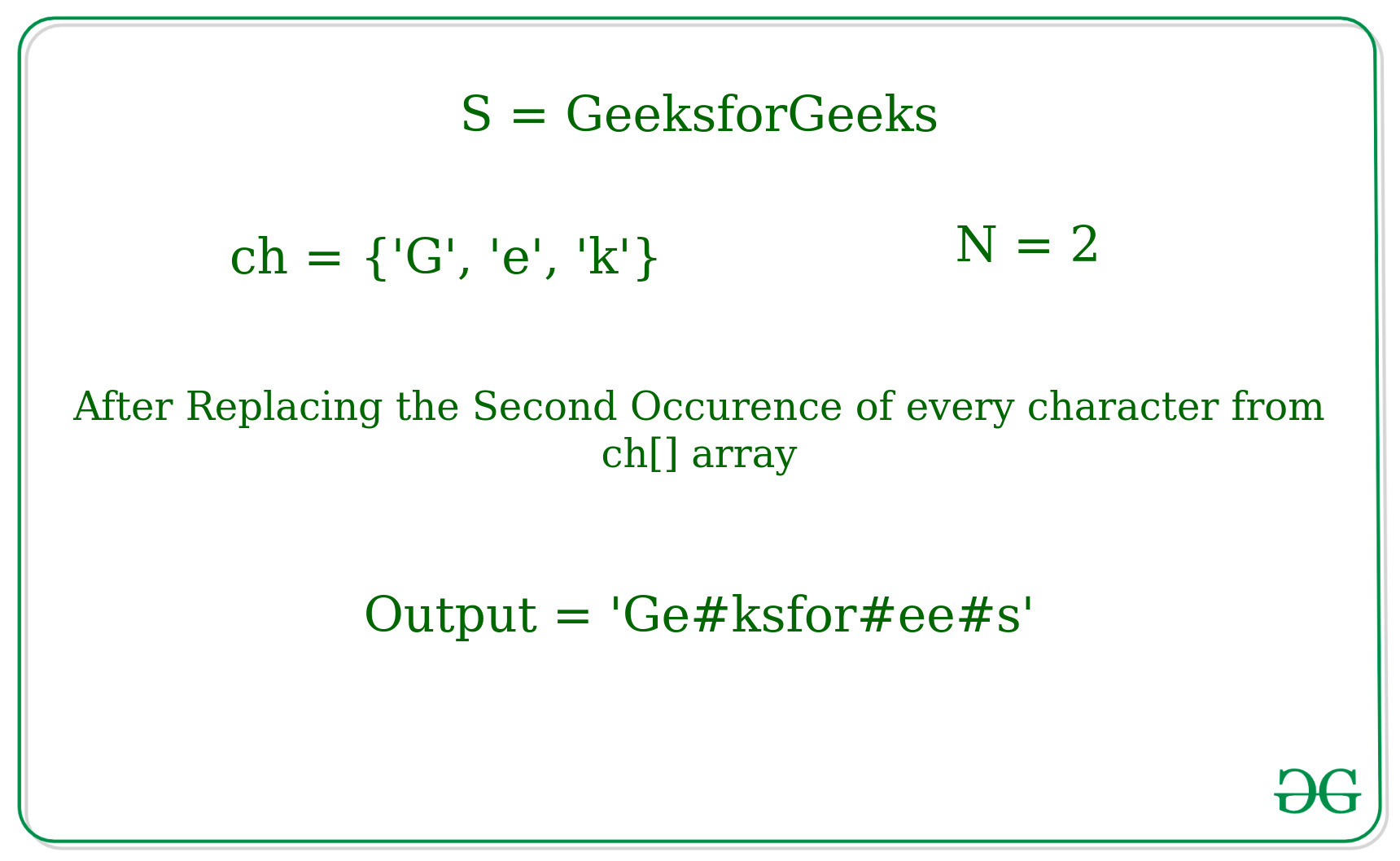








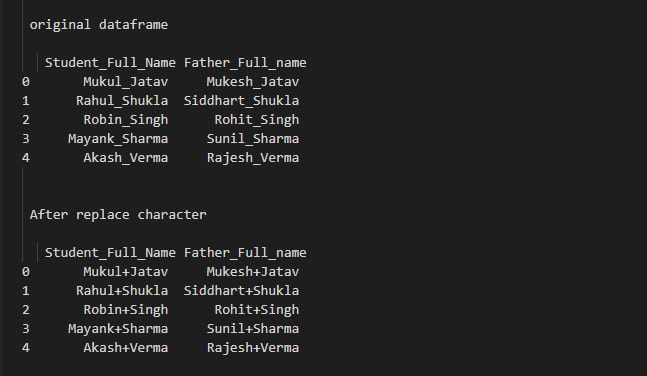





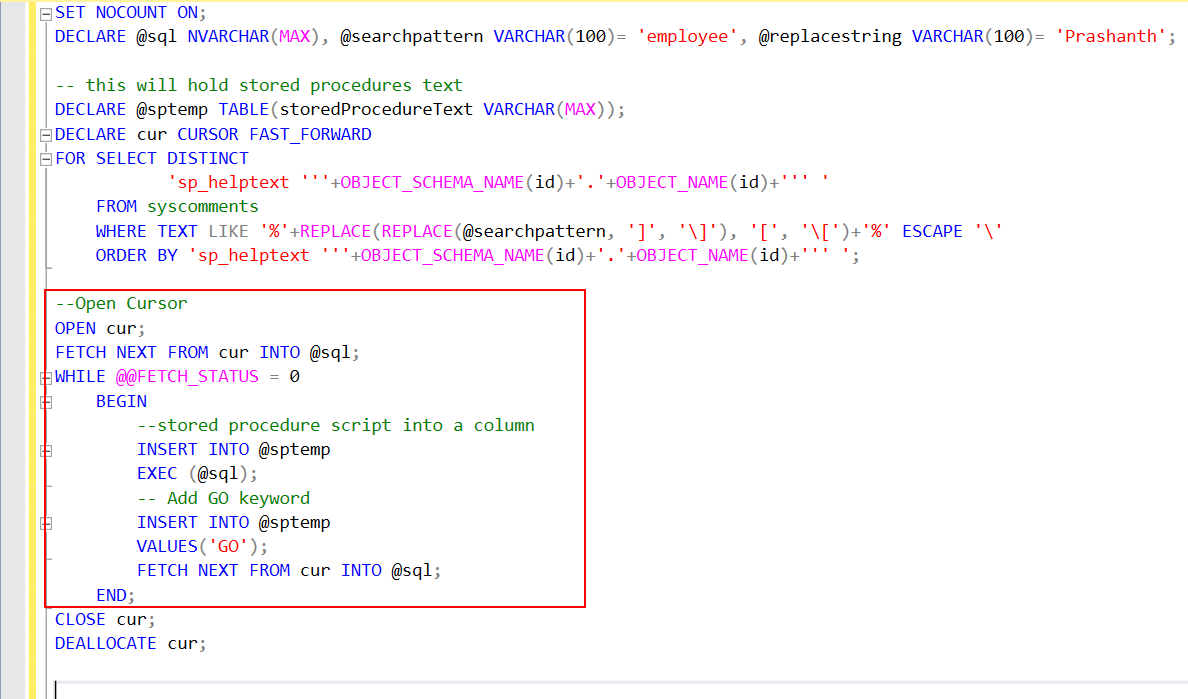

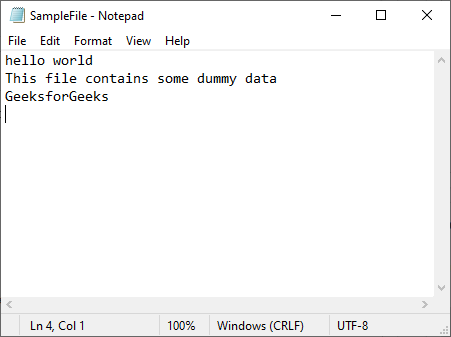




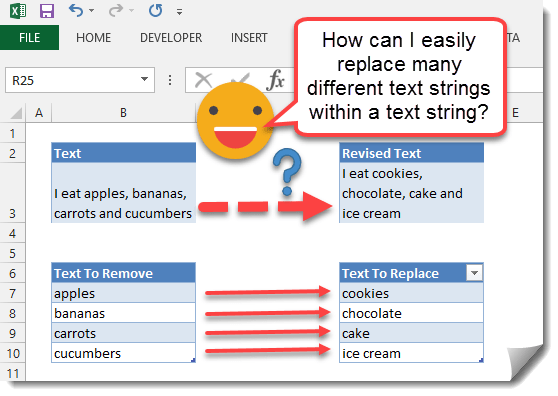









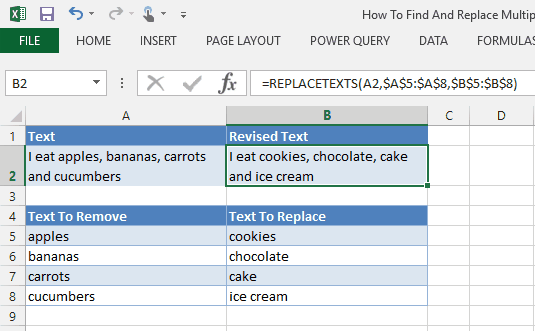

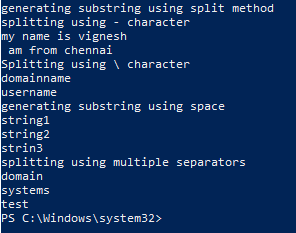










Article link: replace multiple characters python.
Learn more about the topic replace multiple characters python.
- How to replace multiple Characters in a String in Python
- 5 Ways to Replace Multiple Characters in String in Python
- python – Best way to replace multiple characters in a string?
- Python | Replace multiple characters at once – GeeksforGeeks
- Python: Replace multiple characters in a string – thisPointer
- Replace Multiple Characters in a String in Python | Delft Stack
- Extract and replace elements that meet the conditions of a list of …
- Python String replace() Method Tutorial – Enterprise DNA Blog
- How can I replace multiple characters at once in Python?
- How to Replace Multiple Characters in a String in Python?
- Replace Multiple Characters in Python
- Replace strings in Python (replace, translate, re.sub, re.subn)
See more: https://nhanvietluanvan.com/luat-hoc